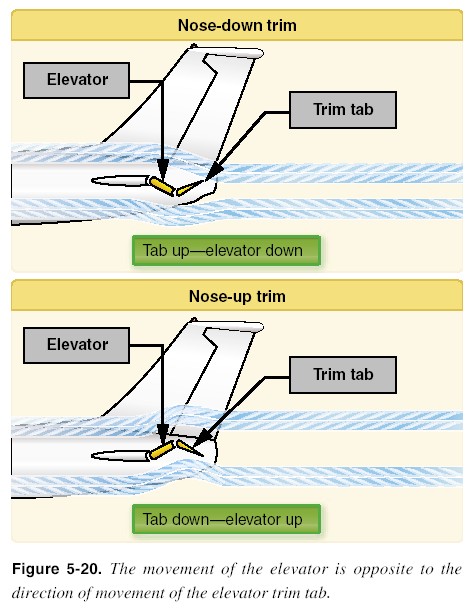those of you regarding the full up nose trim, I've never heard of this before. If it requires full nose up trim I'm assuming you all still have plenty of up elevator authority if needed?
Sure. Full up trim doesn't result in full up elevator. The elevator usually "flies" about an inch or two aft of center with a steep flaps 40 approach and trimmed for 65. And it'll be steep. I'll have to go out and try it again soon and let it stabilize and I'll get you an exact speed for my airplane.
My ailerons are also drooped just a bit at flap 40. (They come down with the flaps and then start back up somewhere around 22 degrees of flap if I remember correctly. They about half drooped at 30 and almost all the way back up at 40, but not quite.)
Keep in mind we're both talking about STOL equipped 182s. It'll happily fly along for as long as I have altitude with the elevator trim full aft and power all the way off with tons of airspeed margin.
Mine will even fly a lovely "falling leaf" with the elevator itself held full aft, power off, forever, if you stay on top of any bank that develops with the rudder. Makes the stall fences on top of the wing do a little song of vibrating aluminum, too. No tendency to try to quickly drop a wing, but it'll eventually drop one a little and it will take full rudder to bring it back up. Slowly. But it'll do it all day or until you're out of altitude.
I've demonstrated this for fellow pilots by just starting in level flight and pulling power off smoothly and increasing the elevator until it's at the stop, and then wrapping my arms around the yoke and holding it there in my lap. Gets real quiet, then the nose drops a bit and you hear a little speed, and the nose comes back up, ad infintum.
(The resulting decent rate and porpoising makes a full aft elevator a bad idea for an actual approach to a landing, but frankly if I had to put it into the trees somewhere, I'd be *really* close to full aft, because it'll hit whatever it's going to hit REALLY slow while still under control and with plenty of aileron and rudder authority. YMMV in a non-STOL aircraft.)
As others have pointed out, it's a busy moment if you need to pour the coal in and go around. And you're going to have to puuuuuuush.
The electric trim on the later (even heavier) 182s is generally too slow to wait on, if you need to get the trim out "right now". Plus they simply won't keep flying as slow as mine will.
Have to be ready to get busy with the wheel at any time if you're doing the 40 flap power off thing. Roll that thing like you mean it, and especially if you do it at sea level where the engine has gobs more power...
Up here the nose won't quite come up as much, or the elevator push back quite as hard, with the reduced power from the engine and higher DA.
But it'll still pitch up into a climb that's way too steep if you let it. You can't let it.
Puuuuuuush and start rolling that wheel.

If it had any more trim authority, it'd be dangerous to ever roll it all the way up. As it is, it's a handful but manageable if you're paying attention. Which is probably exactly what the trim designers were going for, pre-STOL kit.
It'll fly way behind the power curve with the engine roaring at 55 or even quite a bit slower, too. You won't be needing much up trim for that.
The POH addendum calls for a 39 knot rotation speed for a STOL departure, 44 knot obstacle climb speed while retracting flaps from 30 to 20, and 65 knot climb speed after clearing obstacles.
It's really really slow. I usually wimp out and rotate around 45.
The takeoff data in the POH addendum also has adjustments for weight.
The book claims at 2000 lbs (light), with an IAS of 38 knots at 50' and zero headwind, you'll have a ground roll of 160' at sea level on a cool 59F day. With a 10 knot headwind, 115' ground roll. And if you're lucky enough to have a 20 knot steady headwind, the book claims a 65' ground roll.
At max gross of 2800 lbs, the zero wind takeoff distance goes up to 390' and at 10 knots of headwind, 275', and 20 knots, 175'. But at zero wind it will also take 735' laterally to climb to clear a 50' obstacle. Obviously Vx is a better option than shooting for shortest ground roll.
I haven't pushed it that hard. I usually see a "leisurely" 200'-300' or so for takeoff, and frankly even flying it slower, somewhat puckers my ass. You have zero margin for the engine to even cough, doing that.
The book claims under those same atmospheric conditions with 40 flap and an IAS of 43 at 50' AGL, a 245' landing ground roll. Best I've done is just under 300'. Again, not a big fan of slowing to 43 knots above ground effect. I'll slow to 55 and then to 50 "over the fence".
Why mention all of that? Because it won't trim that slow. At all. After rolling in all the trim available, you will still be pulling on the yoke a little to hold it that slow at Flaps 40.
Fun stuff. Not all that practical in a 182. But fun.



